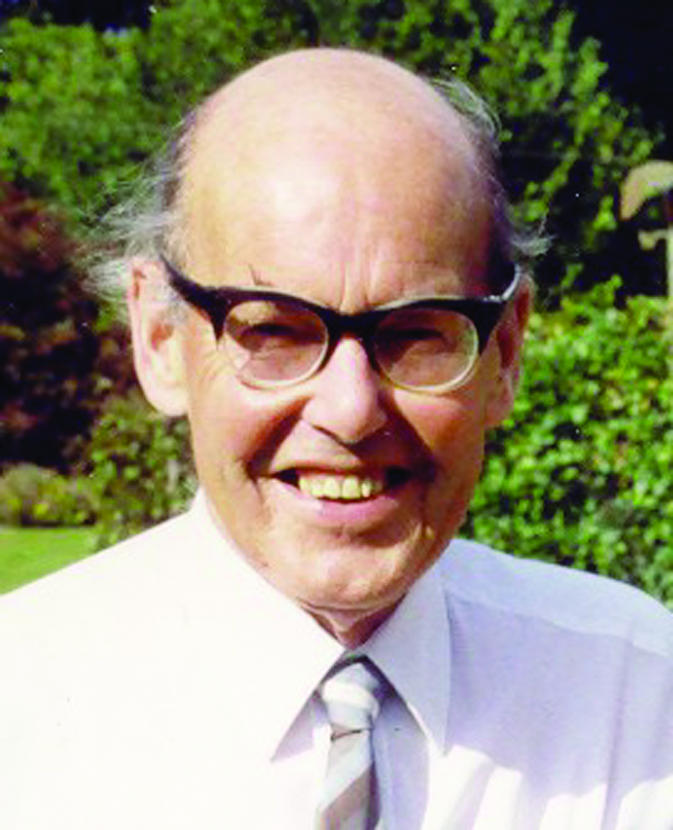Short abstract
An expert on blood pressure and hypertension
Bill Miall was a pioneer in research on blood pressure, which culminated in the Medical Research Council's two hypertension trials. Born into a Quaker family he registered as a conscientious objector in 1939, joined the Friends Ambulance Unit, and served in Norway, Finland, Egypt, and Greece.
After qualifying at St Mary's Hospital Medical School in 1950 Bill became George Pickering's house physician. This was at a time of rapid developments in research on blood pressure. Pickering's view that pressure was characterised by a unimodal distribution determined by a variety of environmental and genetic characteristics was becoming accepted over Robert Platt's view of two separate distributions, predominantly determined genetically. But both Pickering and Platt had worked on hospital patients, often selected because of their blood pressures and the complications of hypertension.
Bill realised the value of unselected, free living population groups, which led him to join the Medical Research Council (MRC) pneumoconiosis research unit in South Wales, where he renewed the association with Archie Cochrane that had started when they were both prisoners of war. He organised meticulous surveys of the mining communities in the Rhonda Fach. This work confirmed Pickering's view and also showed that there was a graded relationship between pressure and the risk of stroke and heart attack.
In 1962 Bill became director of the MRC's epidemiological research unit in Jamaica, where he continued his work on blood pressure, and in 1971 he joined Tom Meade in the MRC epidemiology and medical care unit at Northwick Park Hospital in Harrow.
During the 1950s Bill Paton and Nora Zaimis had produced hexamethonium. Horace Smirk and John McMichael had shown its unequivocal benefits in the treatment of malignant hypertension. But ganglion-blocking agents had such unpleasant side effects that many patients could not tolerate them. In the 1960s and 1970s, however, two relatively small trials by the US Veterans Administration showed that preparations that were more acceptable—hydrochlorothiazide, reserpine, and hydralazine—in those with moderate or severe hypertension reduced strokes and heart failure, though not apparently heart attacks.
Figure 1.

The next question, therefore, was whether it would be worthwhile detecting those with “mild hypertension” and treating them. The MRC set up a working party under the chairmanship of Stanley Peart. Bill was the scientific secretary. A trial in mild hypertension had to be large since cardiovascular events are not as frequent as in severe hypertension. After lengthy debate, the MRC agreed to a trial with 18 000 participants.
Strange as it now seems, the idea of using general practice to recruit the large numbers needed was almost an afterthought, but gained encouragement from individual doctors and the Royal College of General Practitioners. The trial began in 1977 and was carried out through 176 general practices, recruiting just over 17 000 people aged between 35 and 64. Randomisation was to bendrofluazide, propranolol, or placebo. Treatment clearly reduced the stroke rate but apparently had no effect on coronary events. Cautious post hoc analyses strongly indicated that bendrofluazide was more effective than propranolol. Towards the end of the first trial, recruitment began for a second trial in older people, through 226 general practices, using atenolol, hydrochlorothiazide with amiloride, or placebo. The results showed a reduction in strokes and coronary events, both attributable to the diuretic treatment.
It is hard to exaggerate the clinical and public health implications of the trials in confirming that screening and treatment are worthwhile. The MRC trials have also made a significant contribution to overviews of smaller previous trials and of later trials, which have resolved uncertainties arising from each separate trial on its own. These overviews have established clear reductions in heart attacks as well as larger reductions in strokes. The diuretic treatments in the MRC's trials remain the first choice for many doctors. Bill's immense contributions were, firstly, to recruit the practices, personally to maintain the accuracy of the records and electrocardiograms, and to bring large numbers of nurses into research. Secondly, the practices in the hypertension trials formed the basis of the MRC's general practice research framework, a unique and highly valued organisation, now consisting of over 1000 practices throughout the United Kingdom.
Bill continued his interests in hypertension and its management after retirement. An MRC grant enabled him to write a book with Gillian Greenberg about the first trial, Mild Hypertension: Is There Pressure to Treat? (Cambridge University Press, 1987). He retired to the Lake District, where he continued as an enthusiastic oil painter and took up sculpture.
In 1997 Bill underwent surgery for colon cancer, and when liver secondaries were confirmed he went on appreciating his natural surroundings and enjoying his friends and family until the last moment. Predeceased by his wife, Mary, he leaves a daughter; four sons; and 12 grandchildren.
William Einar Miall, epidemiologist Medical Research Council pneumoconiosis research unit, Llandough, 1952-62, director MRC epidemiological research unit, Jamaica, 1962-71, and scientific staff MRC epidemiology and medical care unit 1971-83 (b 1917; q St Mary's Hospital, London, 1950), d 5 June 2004.


